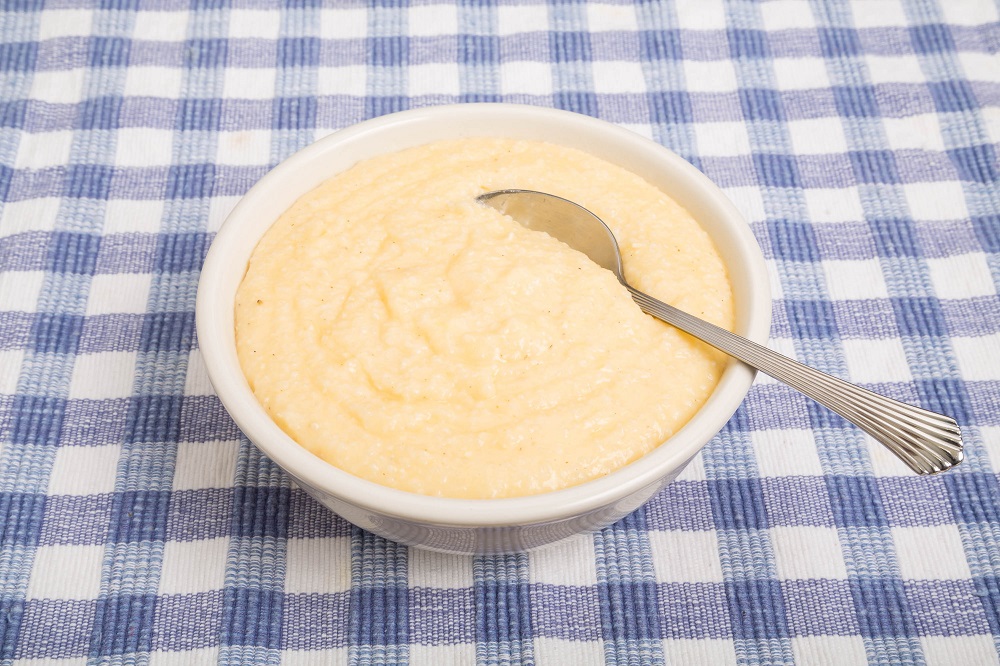The term Grits refers to an oatmeal-like dish popular in the southern states of America. Produced from ground and mashed corn that has been dried beforehand, grits are known for being relatively cheap to purchase and easy to make, oftentimes even more so than oatmeal itself.
Much like oatmeal as well, grits can be seasoned with a variety of different ingredients, whether sweet or savory, and as such it is often hard to tell exactly how long grits may remain safe to eat, depending on the type of grits as well as the additives involved.
In the correct conditions, grits may last for as long as an entire week before showing signs of spoilage, so long as they remain in an air-tight container. However, if your grits are uncooked and remain in their ground and dehydrated form, they may last for more than a year depending on the environment they are stored in. Keep in mind that this shelf-life is altered in the event that your grits have had other ingredients incorporated into them.
How Long Do Grits Last After Cooking?
Like most forms of life, bacteria and fungi require adequate water in order to survive and propagate their species. This is often the reason why dry foodstuffs last longer than their higher moisture-content counterparts, as the lack of water in dry foodstuffs makes them inhospitable or otherwise hostile to microbial life.
In the case of grits, the estimated shelf-life drops to less than even a tenth once cooked, though its relative shelf-life is still quite long compared to other mashed organic produce. Grits are often packaged with preservatives and salt, of which will help maintain the grit’s edibility for a longer than usual period.

Apart from the addition of preservative compounds and salt, an excellent way to prevent the spoilage of your cooked grits is to lower their temperature so as to slow down the propagation of these microbes.
Keep in mind that the term used here is slowed down and not stopped, as your grits are still perfectly capable of going bad, even in sufficiently low temperatures.
First allow your grits to cool off if they have recently been removed from the stove. Pour the grits into a resealable plastic container, preferably made of a material that will not leach its flavor into the grits.
Store this container in the deepest and driest part of your refrigerator, preferably as far as possible from the crisper section. In the ideal conditions, your grits can last up to a week stored in this way.
How Long Do Dry Grits Last in the Refrigerator?
In the event that you have opened your package of uncooked grits and are unable to reseal them, choosing to refrigerate them is perfectly acceptable, though unnecessary.
As dry grits can last for up to a year or longer stored in the pantry, choosing to refrigerate them will not extend their shelf-life by any significant length. However, the controlled temperatures and humidity of a refrigerator can be excellent for providing a more stable storage environment in order to store your grits in.
If choosing to store your grits in the refrigerator, it is of paramount importance to keep them insulated from moisture as much as possible, because if these dried corn bits absorb enough water, they will begin to spoil prematurely as bacteria and fungi are activated on their surface.
Keep the dried grits in an air-tight container free of any sort of moisture. Store this container in the driest section of your refrigerator, far from the crisper drawer if possible.
In the best conditions, your dry grits can last for up to three years in the refrigerator.
Can you Freeze Grits?
As dry grits do not require any sort of extra storage conditions apart from being isolated away from moisture and insects, choosing to freeze it is both unnecessary and inadvisable as the environment of the freezer may cause moisture to condensate in the grit’s container once they begin to thaw.
Cooked grits, however, are an excellent candidate for freezing owing to the fact that they are practically a slurry, which will hold up to the effects of freezing quite well.
Choosing to freeze cooked grits requires several steps to be taken, though, and may be difficult to thaw once removed from the freezer. It is best to freeze cooked grits in the event that you believe you will require their shelf-life to last longer than a week.
How to Freeze Cooked Grits
In order to freeze cooked grits, first allow them to cool off completely, as steam formed from placing the hot porridge in the freezer will cause ice crystals to form, sealing the container shut as well as collecting frost on the walls of your freezer.
Keep in mind that freezing your grits will cause any fatty substances to separate from the grits, such as butter or milk. These lipid-based ingredients are largely water insoluble, and will form a hard layer on top of the grits as freezing causes them to de-emulsify owing to differing freezing temperatures.
Now completely cooled off, place the grits in an air-tight container somewhat larger than the total volume of your grits. Because of the high water content of cooked grits, freezing will cause it to expand somewhat, which will rupture any container that is too small to contain it.
Store the cooked grits in the darkest part of your freezer, far from any sources of quickly moving cold air like fans or freezer vents, as these will cause freezer burn and damage the taste of your grits.
Stored in this way, your grits should last up to four months in the freezer, though repeatedly removing them from the freezer and then subsequently re-freezing will shorten this time drastically.
In order to best thaw your grits, allow them to defrost overnight in the refrigerator. Or, if pressed for time, microwave the container uncovered on low.
What Ingredients Cause Grits to Expire Faster?
As is the case in most stored foodstuffs, the total shelf-life of a dish with more than a single component is only that of its fastest expiring ingredient. This is often due to enzymes or microbes being released by the expired ingredient into the other ingredients adjacent to them, essentially “infecting” them.
Ingredients with a significantly shorter shelf-life than that of cooked grits are poultry products, dairy products, and fresh fruit, all of which will shorten the total shelf-life of the grits by a noticeable amount.
A good way to avoid this shortening of shelf-life is to store the individual grit toppings separate from each other and only combine them once it is time to eat.
How to Extend the Shelf-life of Grits
In the event that you do not have a refrigerator or freezer available to store your cooked grits in, adding salt or other acidic ingredients may act as a minor deterrent to bacteria and fungi, extending the grit’s shelf-life for several hours at room temperature.
However, keep in mind that even without the presence of microbial life, your grits can very well expire on their own when exposed to the elements, such as any fatty substances going rancid or the grits themselves oxidizing, giving it an unpleasant texture and flavor.
How Long Do Instant Grits Last?
Instant grits are the commercially processed version of grits, often available for a low price and in large portion sizes owing to the ease of processing grits in a factory environment.
The difference between instant grits and other kinds of commercially available grits is the fact that manufacturers often add various compounds that can extend the relative shelf-life of instant grits, increasing profits and decreasing the chance of wastage.
A good rule of thumb is to go by the best-by date printed on the instant grit’s container and to add two years on top, as the best-by date is simply a conservative estimate.
References
1. Marcus, Erica (May 3, 2006). “Newsday, Melville, N.Y., Burning Questions column: Kernels of Truth on Ground Corn”. Knight Ridder Tribune Business News. Washington.
2. Moss, Robert. (N.D.) “The Surprisingly Recent Story of How Shrimp and Grits Won Over the South”. Serious Eats.





Hi, I'm Dom
Dom Eats was started to help other people fall in love with food. While cooking can feel intimidating, it doesn't have to be.